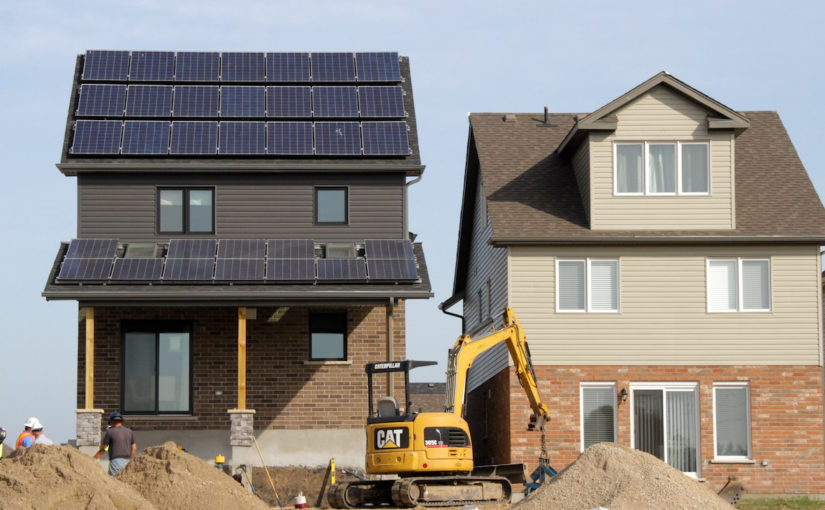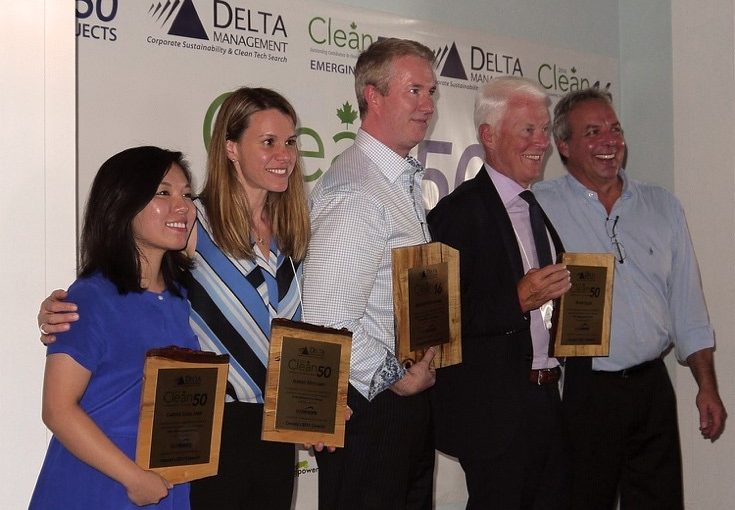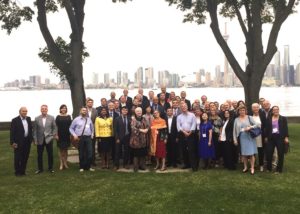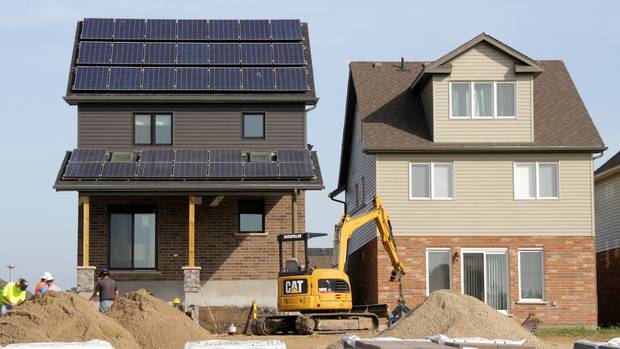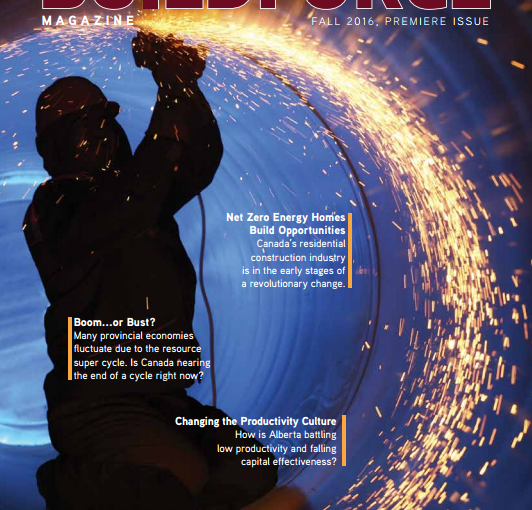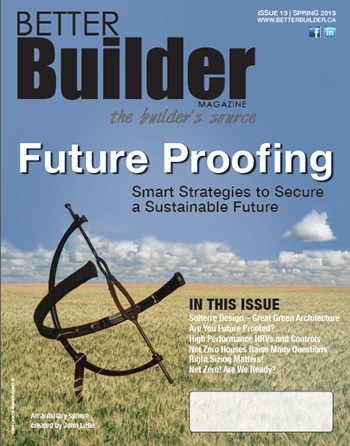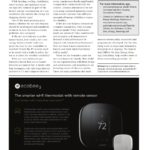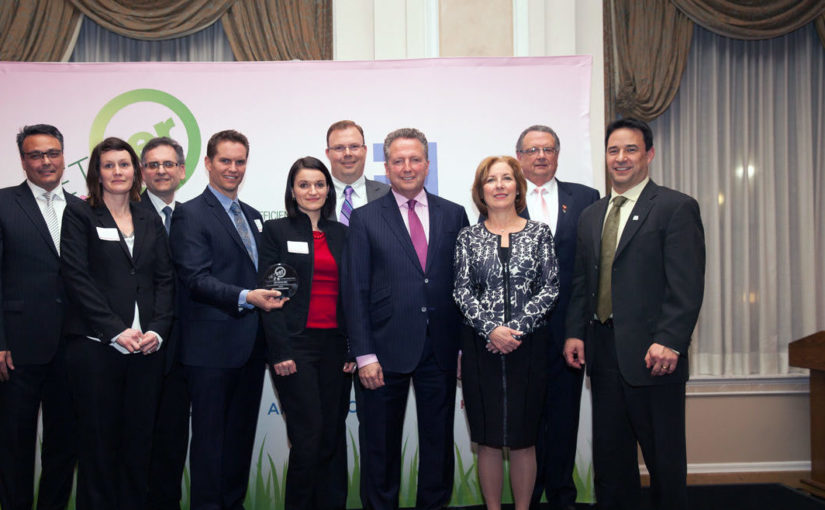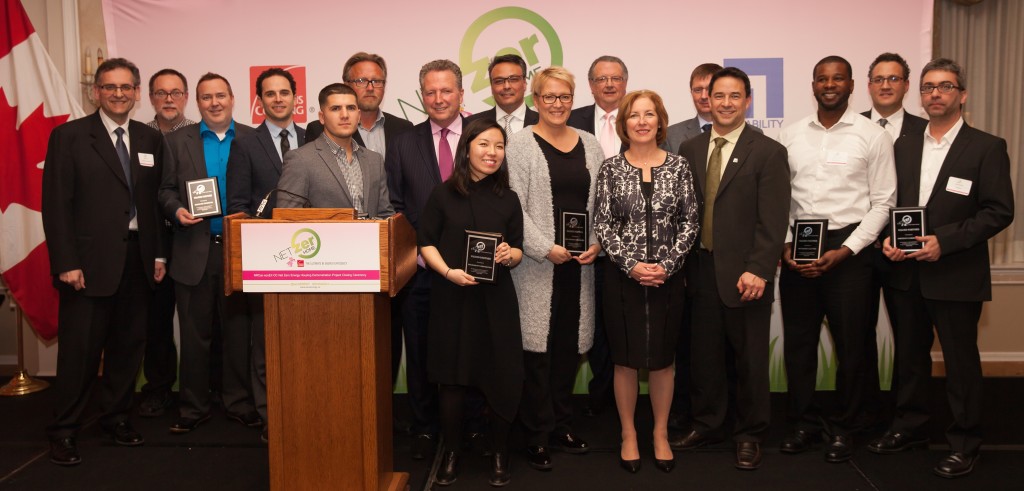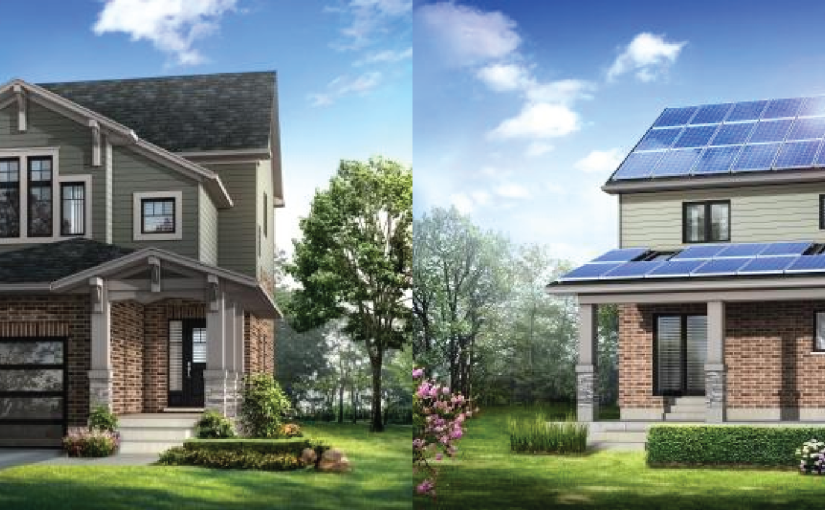MEDIA RELEASE: CANADIAN NET-ZERO ENERGY HOME BUILDERS RECOGNIZED FOR CONTRIBUTION TO INDUSTRY-CHANGING DEMONSTRATION PROJECT
(March 10, 2016, Ottawa, ON) Canada’s elite net-zero energy (NZE) home builders gathered last night in Ottawa to celebrate and accept awards for their contribution to the largest Canadian net-zero energy (NZE) housing demonstration project by advancing building science and responding to the global climate change challenge.
A total of 26 homes were built in four provinces as part of the Net-Zero Energy Housing demonstration project with Natural Resources Canada (NRCan) and Owens Corning Canada.
The five project home builders (and community locations) are: Construction Voyer (Laval, Quebec); Mattamy Homes (Calgary, Alberta), Minto Communities (Ottawa, Ontario); Provident Developments (Halifax, Nova Scotia); and Reid’s Heritage Homes (Guelph, Ontario).

Parliamentary Secretary to the Minister of Natural Resources, Kim Rudd was on hand to congratulate the five builders and all those involved in the project
“With support from Natural Resources Canada’s ecoENERGY Innovation Initiative (ecoEII), five home builders and leading industry suppliers, we have proven that net-zero energy housing can be built using existing technology, at prices that are accessible to the average homebuyer,” stated Salvatore Ciarlo, Technical Services Manager, Owens Corning Canada. “Building entire net-zero communities is a viable, short-term goal”one that we are much closer to as a result of this project’s success.”
Mr. Ciarlo was joined by Kim Rudd, Parliamentary Secretary to the Honourable Jim Carr, Minister of Natural Resources Canada to present the awards.
“Congratulations to Owens Corning Canada, the five participating home builders and the many important players involved in this impressive project,” said Parliamentary Secretary Rudd. “Our government proudly shares your vision of energy-efficient home construction. These net-zero energy homes will reduce our environmental footprint, create clean jobs of the future and help Canada become a global leader in low-carbon energy.”
Measured over a year, a NZE home can potentially produce as much energy as the home consumes. This could mean an average annual energy bill of zero for its homeowner. Natural Resources Canada data suggests that housing accounts for 15% of the country’s greenhouse gas emissions. These NZE energy homes can significantly reduce Canada’s energy use, reliance on fossil fuels, and carbon and greenhouse gas emissions.
“A net-zero energy home loves you back,” explained Kevin Lee, CEO of the Canadian Home Builders’ Association (CHBA). “It shelters you from rising utility costs, it delivers exceptional comfort, it works better, and it lasts.”
Working with NRCan and the CHBA, the outcomes of the home designs and the learnings from the five builders will be shared and disseminated to the industry. This was not only a demonstration project to show that NZE homes are feasible in today’s market but it is also a knowledge transfer success story. Participants of this project do not believe that the NZE home recipe should be a secret. These innovative builders have become educators and mentors to their peers, sharing their learnings and designs at numerous building industry events.

Owens Corning Canada presented home builders with an award recognizing their contribution to the successful net-zero energy project
“This is an emerging technology. As electricity prices go up (and they are and they will) and as solar panel prices go down (and they have and they will) businesses and the public will increasingly adopt these measures,” said Michael Lio of buildABILITY Corporation, a renowned building scientist and manager of the project. “This initiative helped to debug the adoption process so in future, these measures can be adopted seamlessly. To use an analogy: we have built a road through uncharted territory so that others can drive through effortlessly.”
All the NZE homes will eventually be sold to the public. Beyond this project, these builders will offer net-zero energy-ready (NZEr) homes as a standard or an upgrade on a production scale for their next subdivisions“ featuring energy efficiency equivalent to their full NZE houses. Preliminary simulations show that some of these NZEr homes have an impressive 70% reduction in energy costs compared to comparable houses built to code. Solar panels to make them full NZE will be offered as an option.
“While the homes met the same standards to achieve net-zero, each community arrived in a slightly different way,” concluded Ciarlo. “This not only points to the ingenuity and skill of the local home builders, technical experts, equipment suppliers and tradespeople, but demonstrates that we are ready to build net-zero across Canada’s diverse climatic regions.”
For a profile of each net-zero Energy community and more information about the project visit www.zeroenergy.ca.
-30-
For more information, or to schedule interviews, please contact:
Michael Zupanic, ECO Strategy
416-972-7404 or mzupanic@ecostrategy.ca
Owens Corning (NYSE: OC) develops, manufactures and markets insulation, roofing and fiberglass composites. Global in scope and human in scale, the company’s market-leading businesses use their deep expertise in materials, manufacturing and building science to develop products and systems that help save energy and improve comfort in commercial and residential buildings. Through its glass reinforcements business, the company makes thousands of products light, strong and durable. Ultimately, Owens Corning people and products make the world a better place. Based in Toledo, Ohio, Owens Corning employs about 15,000 people in 26 countries. It has been a Fortune 500® company for 61 consecutive years. For more information, please visit www.owenscorning.com.
The ecoENERGY Innovation Initiative (ecoEII), announced in the Budget 2011, the Next Phase of Canada’s Economic Action Plan, is a $268 million program searching for long-term solutions to eliminate air pollutants and greenhouse gas emissions from energy production and use. Eligible projects must be demonstration or research and development.

